Introduction
Facing a USFDA audit can be stressful for any pharmaceutical company. However, being well-prepared and avoiding common mistakes can help you navigate the process successfully.
This blog will discuss five crucial mistakes to avoid during a USFDA audit and how you can leverage IncepBio’s expertise to ensure compliance. Let’s dive in!
USFDA audits are essential to ensure that pharmaceutical companies comply with regulatory standards. These audits help guarantee that the products reaching consumers are safe and effective. Avoiding common pitfalls can make a significant difference in the outcome of your audit.
Mistake 1: Inadequate Documentation
The Importance of Proper Documentation
Proper documentation is the backbone of compliance in the pharmaceutical industry. It provides proof that your company follows all regulatory requirements.
What Proper Documentation Includes
- Standard Operating Procedures (SOPs): Detailed instructions on how tasks should be performed to ensure consistency and compliance.
- Training Records: Documentation proving that employees are trained in SOPs and other regulatory requirements.
- Batch Records: Comprehensive records of each batch of product manufactured, including all steps and checks performed.
Consequences of Inadequate Documentation
Without proper documentation, proving compliance becomes difficult. This can lead to warnings, fines, or even shutdowns. A survey by the USFDA revealed that over 60% of warning letters issued in 2021 were due to documentation deficiencies.
Mistake 2: Poor Communication with Auditors
The Role of Communication
Effective communication with auditors is crucial. It sets the tone for the entire audit process and can significantly impact the outcome.
How to Communicate Effectively
- Be Honest: Always provide truthful information. Misleading the auditors can lead to severe penalties.
- Stay Calm: Maintain your composure even if questions are challenging.
- Clarify When Necessary: If you don’t understand a question, ask for clarification. It’s better to seek understanding than to give incorrect information.
Risks of Poor Communication
Miscommunication can lead to misunderstandings and misinterpretations. This might result in auditors perceiving issues where there are none, potentially leading to negative audit outcomes.
Mistake 3: Ignoring Compliance Training
The Need for Regular Training
Regular compliance training ensures that employees understand and follow regulatory requirements. It’s not enough to train employees once; ongoing education is crucial.
Key Areas for Training
- Current Good Manufacturing Practices (cGMP): These practices ensure that products are consistently produced and controlled according to quality standards.
- Data Integrity: Ensures that all data recorded is accurate, complete, and reliable.
- Health and Safety: Training on maintaining a safe working environment, which is crucial for both compliance and employee well-being.
Impact of Inadequate Training
Without proper training, employees might unintentionally violate regulations, leading to compliance issues. The USFDA reported that inadequate training was a key factor in 45% of the compliance issues identified during audits in 2022.
Mistake 4: Incomplete or Outdated Quality Systems
Maintaining Quality Systems
Quality systems must be up-to-date and comprehensive. These systems ensure that your products meet regulatory standards for quality and safety.
Components of a Quality System
- Quality Assurance (QA): Ensures that the products meet required standards before they reach the market.
- Quality Control (QC): Involves testing products to verify their quality.
- Corrective and Preventive Actions (CAPA): Identifies and rectifies quality issues to prevent recurrence.
Risks of Incomplete Quality Systems
An incomplete quality system can lead to product recalls, legal issues, and damage to reputation. According to a 2021 report by the Pharmaceutical Quality Group, inadequate quality systems accounted for 35% of product recalls in the US.
Mistake 5: Lack of a Mock Audit
Benefits of Conducting Mock Audits
Mock audits simulate the real audit experience, helping identify areas for improvement before the actual audit.
How to Conduct a Mock Audit
- Internal Auditors: Use trained internal staff or hire external consultants to conduct the mock audit.
- Audit Checklist: Develop a checklist based on USFDA guidelines to ensure comprehensive coverage.
- Review Findings: Address any issues identified during the mock audit to improve compliance.
Consequences of Skipping Mock Audits
Without a mock audit, you might be unprepared for the real audit, leading to unexpected non-compliance issues. A study by the Regulatory Affairs Professionals Society (RAPS) found that companies conducting regular mock audits had a 30% higher compliance rate during actual USFDA audits.
How IncepBio Can Help
At IncepBio, we specialize in helping pharmaceutical companies navigate the complexities of USFDA audits. With over 50 years of combined industry experience, we offer:
- Comprehensive Documentation Services: We help ensure all your documentation meets regulatory standards.
- Effective Communication Training: We train your staff on how to communicate effectively with auditors.
- Regular Compliance Training: Our training programs cover all essential areas, including cGMP, data integrity, and health and safety.
- Quality System Development: We help develop and maintain robust quality systems tailored to your needs.
- Mock Audits: We conduct thorough mock audits to prepare you for the actual USFDA audit.
Partnering with IncepBio means you have a team of experts dedicated to helping you achieve and maintain compliance, reducing the risk of audit failures.
By understanding and avoiding these common mistakes, you can improve your chances of a successful USFDA audit. Remember, preparation is key, and IncepBio is here to help you every step of the way.
Conclusion
A USFDA audit is an inspection by the United States Food and Drug Administration to ensure that pharmaceutical companies comply with regulatory standards.
Documentation provides proof that your company follows all regulatory requirements, which is crucial for demonstrating compliance.
Compliance training should be conducted regularly, at least annually, to keep employees updated on current regulations.
QA ensures that products meet required standards before they reach the market, while QC involves testing products to verify their quality.
A mock audit is a simulated audit conducted to identify and address potential compliance issues before the actual USFDA audit.
Poor communication can lead to misunderstandings and misinterpretations, potentially resulting in negative audit outcomes.
Key areas include Current Good Manufacturing Practices (cGMP), data integrity, and health and safety.
Quality systems ensure that your products meet regulatory standards for quality and safety, helping to prevent recalls and legal issues.
Mock audits help identify areas for improvement, ensuring better preparation and higher compliance during the actual audit.
IncepBio provides comprehensive documentation services, effective communication training, regular compliance training, quality system development, and thorough mock audits to help companies achieve and maintain compliance.






